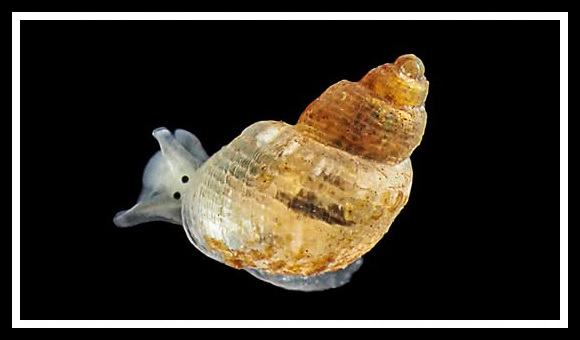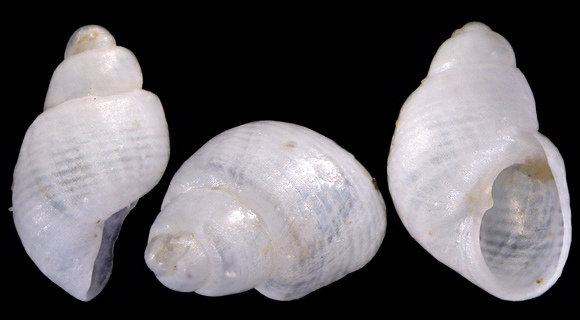
North Sea to Canarias, to Mediterranean (Occitania, Valencia) and Black Sea. Ectoparasit of some shallow infralittoral tube-building polychaetes belonging to the genus Sabellaria Lam.
Original taxon: Odostomia dolioliformis. Synonym: valida.
In grit, Les Coussoules, north of La Franqui, Leucate, Aude, Occitania, S. France. 1mm. A. Bertrand legit (FR).
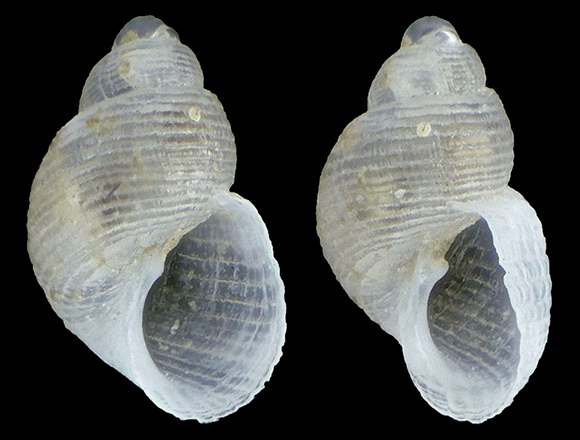
« Testa ovalis, Dolio Perdix forma assimilans, tenuis, pellucida, alba, circa 20 striis undulatis transversim exarata; anfractus 4, ventricosi, subproducti, ad apicem cujusque complanati, ultimo 2/3 testae aequante; apex subacutus; sutura profunda; apertura rotundato-ovalis, subtus vix efFusa, angulo exteriore superne in ultimum anfractum inflexa; columella fere recta; peristoma retro subreflexum et incrassatum; umbilicus parvus, angustus; denticulus validus, conspicuus. » – J. G. Jeffreys: “On the recent species of Odostomia“, Annals and Magazine of Natural History ser. II vol. II, London 1848, p.342.
Above and below: specimen stranded on the beach, east of the harbour of Palavas-les-Flots, Hérault, S. France. 1,5mm.
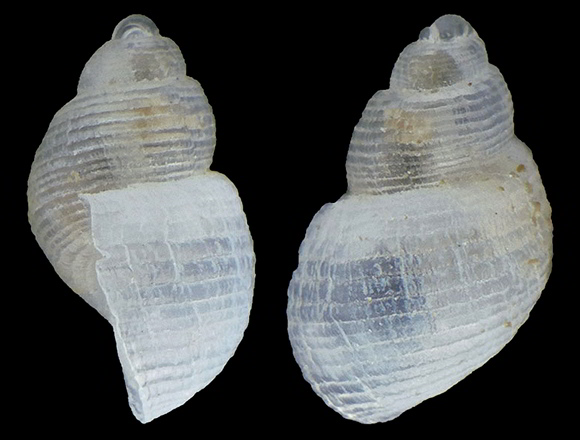
Shell white to pale buff, thin, glossy. Protoconch smooth of 2,5 whorls; winding axis perpendicular to that of the postlarval part. Teleoconch of 2,5-3 flat whorls with a marked subsutural shoulder; sculpture made up of about 10 weak flat spiral cords (ca. 20 on the body whorl, which is higher than half of the whole shell) crossed by thin prosocline growth striae. Aperture ovate, large; no labial teeth; one columellar fold.
Original pictures provided by S. Clanzig (FR).
– (CC BY-NC-SA) –
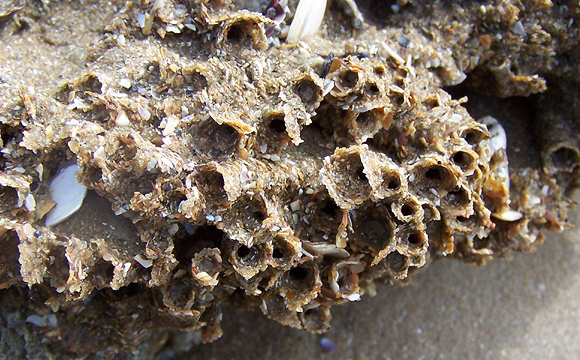
Honeycomb-worms such as the shallow water inhabitant Sabellaria alveolata (Linnaeus, 1767) or the deeper living Sabellaria spinulosa (Leuckart, 1849) are great reef-builders. Oysters come in second, and fix themselves on the tubes. The reefs thereby produced « host highly diverse and unique species assemblages which are distinct from their immediate surroundings. » They « shelter a high number of species […] due to their small-scale topographic environmental complexity, which creates numerous spatial and trophic niches for colonisation by other invertebrates. » – source: REEHAB. Above: a city near Coudepont Point, north-eastern edge of Aix island, west of La Rochelle, W. France. Noemiamea dolioliformis lives here, finding its food through these worms.
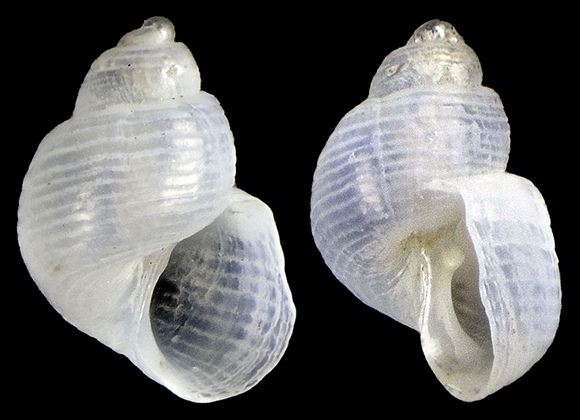
Original pictures provided by S. Clanzig (FR).
– (CC BY-NC-SA) –
